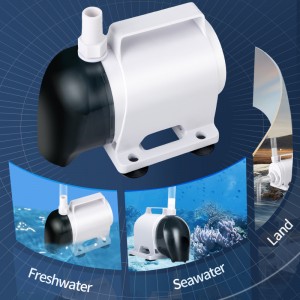Submersible pumps are essential tools in various applications, from residential water supply to industrial fluid management. But how long can you expect your submersible pump to last, and what steps can you take to maximize its lifespan? Let’s dive into the details.
Typical Lifespan of a Submersible Pump
The lifespan of a submersible pump can vary widely based on several factors. On average, a well-maintained submersible pump from a reputable brand can last anywhere from 8 to 15 years. However, some high-quality pumps, especially those used in less demanding conditions, can last up to 20 years. Factors that influence the lifespan include the quality of the pump, water conditions, installation, maintenance, and operating environment.
Factors Affecting Lifespan
1. Water Quality: High levels of sediment or minerals in the water can cause wear and tear on the pump’s components. For example, sandy or gritty water can quickly wear down the pump’s rotating parts.
2. Installation Quality: Proper installation is crucial. Incorrect installation can lead to misalignment, leaks, or other issues that shorten the pump’s life.
3. Operating Conditions: Continuous operation without adequate rest periods can accelerate wear. It’s recommended to avoid running the pump for more than 10 hours continuously.
4. Maintenance: Regular maintenance is key to extending the lifespan. This includes lubricating the pump, checking for overheating, and replacing worn seals and hoses.
Tips to Extend the Lifespan
1. Proper Installation: Follow the guidelines for installation. Ensure the pump is properly submerged and that all connections are secure.
2. Regular Maintenance: Implement a routine maintenance schedule. This should include:
- Lubricating the pump as needed.
- Inspecting the motor and electrical connections regularly.
- Replacing seals and hoses at the first sign of wear.
3. Water Quality Management: Test the water quality regularly and install filtration systems if necessary. This can help reduce sediment buildup and protect the pump.
4. Strategic Operation: Avoid continuous operation by using pressure tanks or variable frequency drives to manage the pump’s workload.
5. Electrical Protection: Use surge protectors and voltage regulators to protect the pump from electrical fluctuations.
6. Professional Inspections: Schedule annual inspections by certified technicians to identify and address potential issues before they become major problems.
Finally, A submersible pump is a significant investment, and with proper care, it can last for many years. By understanding the factors that affect its lifespan and implementing the right maintenance strategies, you can maximize its efficiency and longevity. Remember, a well-maintained pump not only lasts longer but also operates more efficiently, saving you time and money in the long run.
If you want to learn more about this, please contact our website https://www.jingyeaquarium.com/.
Post time: Mar-31-2025

